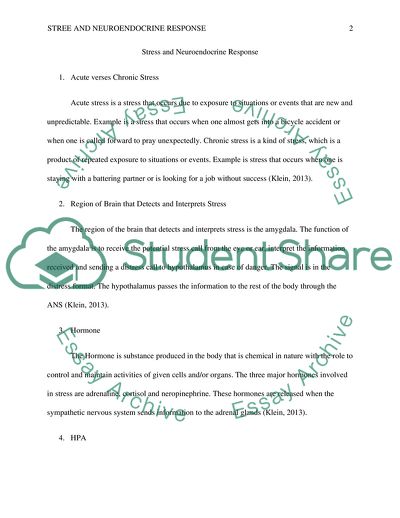Stress and the Neuroendocrine Response (CASE) Coursework. https://studentshare.org/medical-science/1861027-stress-and-the-neuroendocrine-response-acute-versus-chronic-stress
Stress and the Neuroendocrine Response (CASE) Coursework. https://studentshare.org/medical-science/1861027-stress-and-the-neuroendocrine-response-acute-versus-chronic-stress.


